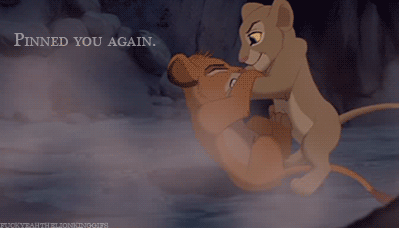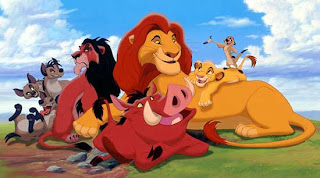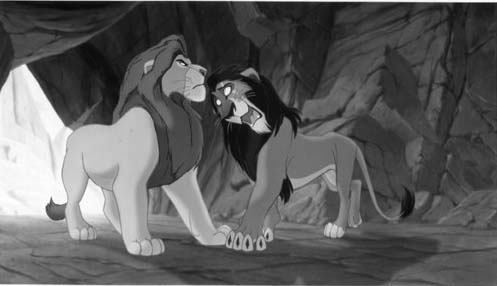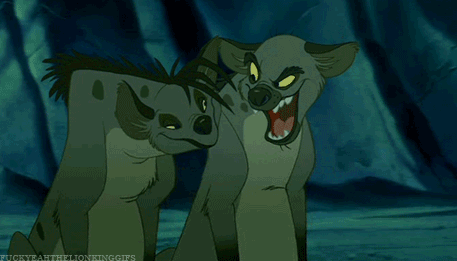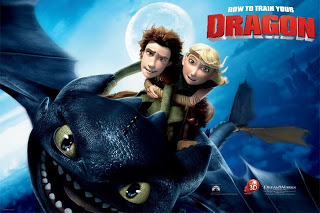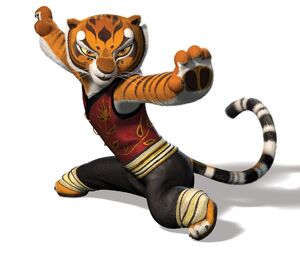Much has been written about
Mulan since its release in 1998, largely because the intentions of the film-makers are so obvious, and so crass. If you buy into the movie’s ethos, you’ll believe that
Mulan is a truly border-crossing story, bringing the best of classic Chinese culture to a global audience with – gasp! – a female action hero at its center. You can quit the revolution now, kids, ‘cos Disney says that post-colonialism and post-feminism are here to stay.
If you watch the actual movie, as I did, as a European expat teaching in a Hong Kong international school and grappling with cross-cultural questions on a daily basis (you try teaching A Bridge To Terabithia to a class of city-dwelling Chinese boys) — not so much. Mulan has always been a problematic text for me because it tries so hard to be culturally sensitive and gender-aware that it positively creaks, and those creaks can be heard by the least-savvy member of the target audience. Its sins are not the sins of historical omission of, say, Snow White or Sleeping Beauty, but are all the more egregious because they come from a place of awareness. Mulan is an attempt to fix something that was perceived to be, if not wrong, unbalanced. This clumsy attempt to wedge The Ballad of Mulan into the rigid, alien form of a Disney narrative (which, among other things, demands musical numbers, a comic sidekick and a Prince Charming to come home with at the end) doesn’t fix anything, and only serves to remind us what is broken about our global culture. The road to hell is, as ever, paved with good intentions, particularly when it heads from the West to the East.
Back in the mid-1990s, Disney had a very specific agenda when it came to China. They wanted to get back into the regime’s good books after the PR disaster that was Kundun. They wanted to replicate the success of 1994’s The Lion King in the region. And they wanted to soften up the government and local politicians when it came to breaking ground on Hong Kong Disneyland, and paving the way for the Shanghai park. What better way to win friends and influence people than by honoring a popular Chinese legend in the form of a Disney film?
So, ever mindful of the accusations of racial insensitivity that had been tossed at Aladdin and Pocahontas, and anxious to get it right this time, Disney sent key artists on the movie to China, for a three-week tour of Chinese history and culture. Three weeks! You can totally “do China” in three weeks. This was enough to give them all the visual reference points they needed, and the whistle-stop, touristic nature of their impressions is very much in evidence on the screen. Every Chinese guided tour cliché is tossed into the scenery hotchpotch, from limestone mountains to the Great Wall to the Forbidden City. This isn’t so bad – other Disney movies are set in a vague Mittel-Europe of mountains, forests and lakes – but the loving attention paid to trotting out the visual truisms of courtyard complexes, brush calligraphy, cherry blossoms et al is just window-dressing. Mulan does look like China, but only if you’re leafing through your holiday photos back in your Florida office.
It’s a shame the screenwriters weren’t sent on the same tour. Mulan is peppered with crass jokes about Chinese food orders (because that’s what Americans can relate to about Chinese culture, right?), disrespectful references to ancestor worship, superficial homage to Buddhist practice and some kung-fu styling, of the Carradine kind. Given that Wu Xia is a rich, diverse, centuries old storytelling tradition, it also seems a shame that the writers didn’t draw more deeply on those perspectives. Instead, they send Mulan on a tired, Western Hero’s Journey, plugging her variables into the 12-step formula tried and tested by countless Hollywood protagonists. She doesn’t ever think like a Chinese woman. She’s never more American than when her rebellious individualism (bombing the mountaintop) wins the day – her filial obedience was only ever lip service paid as a convenience in Act One. Even in Han Dynasty China, it seems, it’s best to follow the American Way.
There’s nothing particularly Chinese about Mulan herself, who is so brutally meant to be not-Disney Princess and not-Caucasian it hurts to look at her for long. Poor little Other. She’s shown wearing Japanese make up, and has a facial structure more suggestive of Vietnamese than Chinese (Disney really was embracing post-colonialism). For half the movie, she also has to be not-female. The lack of detail on a 2-D Disney face meant the animators had to design her as able to switch between genders via her hair – and something subtle going on with her eyebrows. The resulting face evokes, more than anything, a pre-op kathoey who hasn’t yet taken advantage of Thailand’s booming plastic surgery clinics in order to make zer gender-reassignment complete.
Oh, Mulan. She’s meant to be non-offensive, and she ends up being not-anything. Despite claims to the contrary, she’s not a feminist hero. She has to dress as a boy to achieve selfhood, and refuses political influence in order to return to the domestic constraints of her father and husband-to-be. The movie itself doesn’t even pass the Bechdel test, if you consider that the only topic the other female characters discuss is Mulan’s marriageability – a hypothetical relationship with a man. The final defeat of the antagonist is achieved by the male Mushu riding on a phallic firecracker, as Mulan flails helplessly at his feet. Positive female role model? Case closed.
Nonetheless, Mulan did brisk business worldwide – apart from in China. It perhaps had most impact on second or third-gen Asian-Americans, who could relate to the over-simplified view of China, and feel a connection with this stereotypical version of “their” culture, lacking many other reference points. For Asian-Americans across the board, not just Chinese-Americans, Mulan’s brown, angular features represented something vaguely familiar, which made a delightful change. For Chinese-Chinese, Mulan was a thoughtless Western blunder. For Asian-Americans, particularly little girls, Mulan was a rare screen representation of aspects of their selves. Mulan drove the story, at the center of almost every scene, instead of pushed to the periphery as a “typical Asian” shopkeeper, geek, or whore. They could even purchase Mulan merch – although it’s still impossible to buy a doll, a t-shirt or a pin showing Mulan in warrior mode, she’s always got her hair down, and is wearing her hanfu frock. For a generation of Twinkies, Asian on the outside, American on the inside, Mulan was significant, a role model in the Disney pantheon of princesses. It didn’t matter that she was a bit low-rent (no castle, not really a princess), and she hadn’t snagged a proposal by the end of the movie (that happily ever after is a ‘maybe’), she allowed Asian-American girls, many of them adopted, to hold their heads high. And for that alone, you have to love her.
Mulan wouldn’t seem like such a frustrating, failed attempt to push gender and cultural boundaries if it had been followed up by other stories of empowered female warrior heroes. A Disney version of Joan of Arc or Boudicca could have been a blast. Unfortunately, since 1998, it’s been pretty much princess as usual. On the bright side, Disney achieved some of their other goals with Mulan. Hong Kong Disneyland (itself the subject of accusations of crass cultural insensitivity) has been doing brisk business since 2005, thanks to a US$2.9billion investment by Hong Kong taxpayers (of which I was one). The majority of tourists are from mainland China. They come to marvel at Western icons like Mickey, and an all-American Main Street that’s a replica of the one in Anaheim. Thanks to the ubiquitous presence of Mulan images, they stick around. It feels a tiny bit more like they might have a stake in the happiest place on earth.
